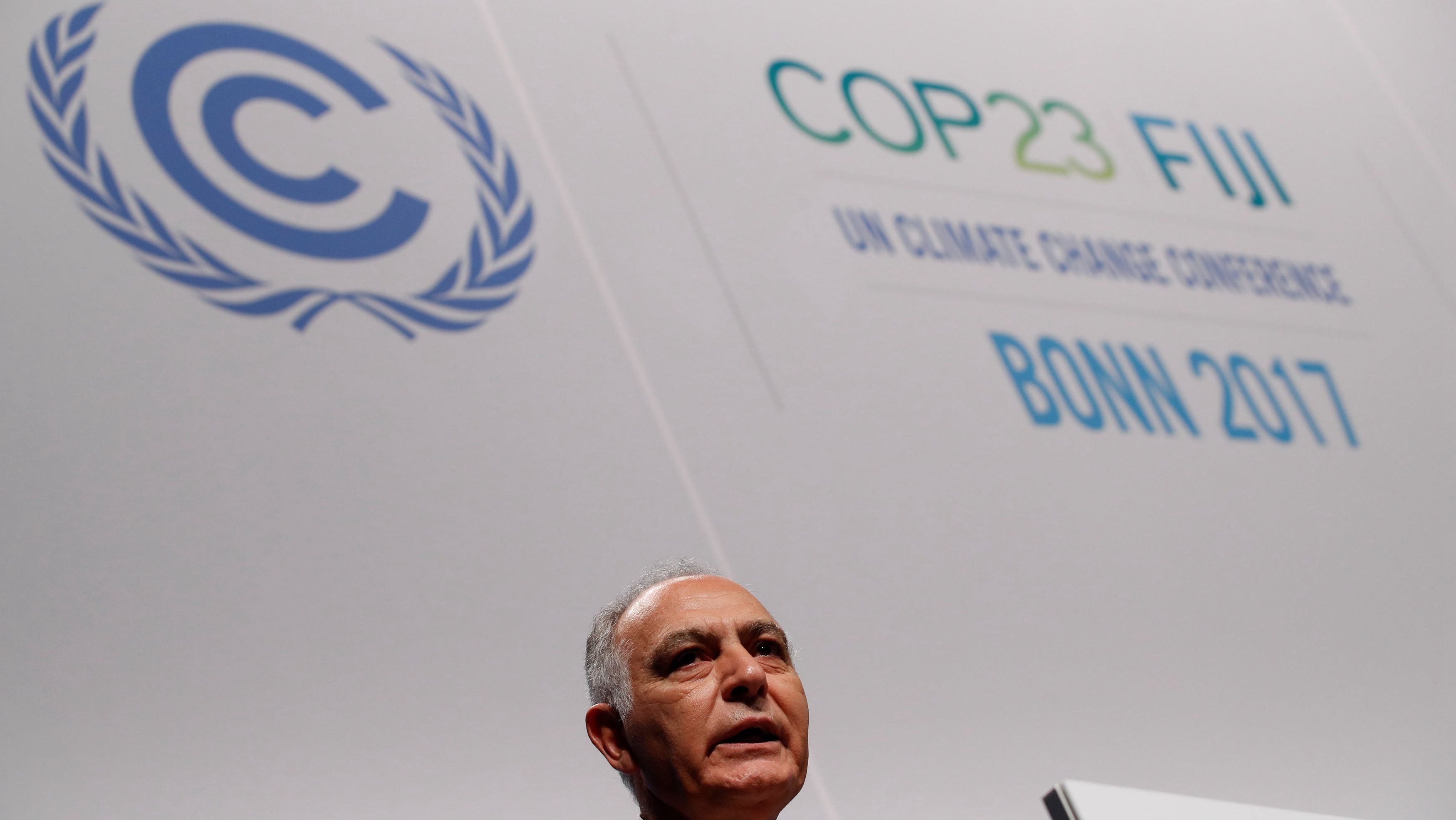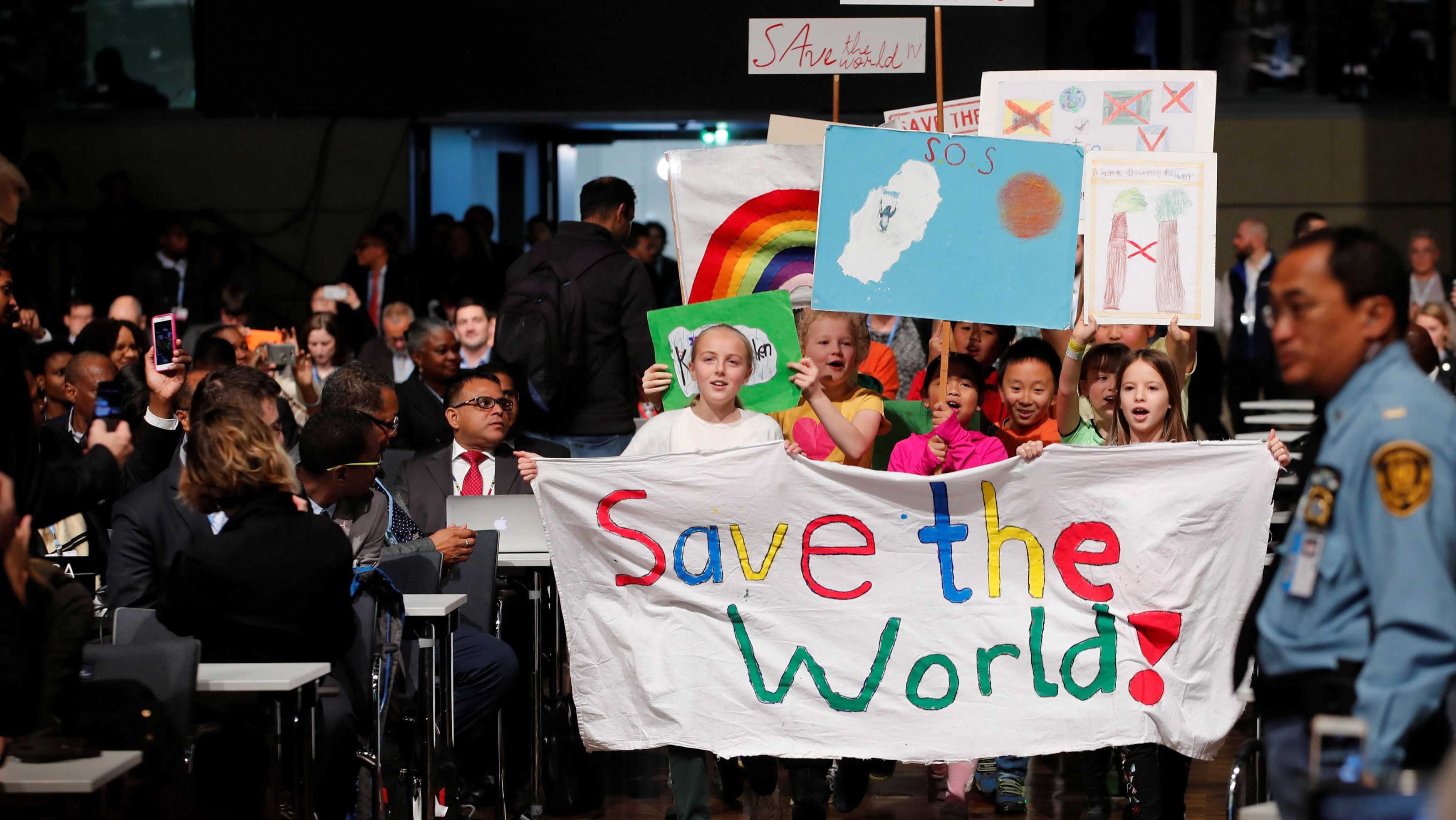
World
15:56, 07-Nov-2017
UN agency says 2017 likely to be among three hottest years
Alok Gupta

On the first day of the UN Climate Change Conference in Bonn, the World Meteorological Organization (WMO) said that 2017 might end up as second hottest year on record.
“The average global temperature from January to September 2017 was approximately 1.1 degree Celsius above the pre-industrial era,” the UN agency said in a statement on Monday.
That puts the year on course to be the hottest on record without a natural El Nino, an event that releases heat from the Pacific Ocean about once every five years.
As a result of a powerful El Nino, 2016 is likely to remain the hottest, followed by 2017 with 2015 ranked third warmest. And 2013-2017 is set to be the warmest five-year period on record.
The WMO’s forecast seemed likely to set the tone of the negotiations which are being attended by around 200 countries to prepare a rule book for the Paris Agreement on climate change. The Conference of the Parties (COP23) will focus on steps to contain the temperate rise at 2 degrees Celsius above pre-industrial level or at least make efforts to cap it at 1.5 degrees Celsius.
“The past three years have all been in the top three years in terms of temperature records. This is part of a long-term warming trend,” said WMO Secretary-General Petteri Taalas.
He added that the world is witnessing unusual weather, including temperatures topping 50 degrees Celsius in Asia, record-breaking hurricanes in rapid succession in the Caribbean and Atlantic, devastating monsoon flooding affecting many millions of people and a massive drought in East Africa.

Children are seen during a climate march on Monday prior to the opening session of the COP23 UN Climate Change Conference hosted by Fiji but held in at the World Conference Center in Bonn, Germany. /Reuters/Wolfgang Rattay
Children are seen during a climate march on Monday prior to the opening session of the COP23 UN Climate Change Conference hosted by Fiji but held in at the World Conference Center in Bonn, Germany. /Reuters/Wolfgang Rattay
Extreme weather
WMO presented detailed data on extreme weather events including hurricanes, floods, and droughts.
Floods in Asia killed more than 1,200 and displaced nearly 40 million people. Major flooding occurred mid-year in parts of southern China, especially within the Yangtze River basin. Around 56 deaths were reported and economic losses were estimated at more than 5 billion US dollars.
The Chinese city of Shanghai and the Hong Kong Observatory reported new records of 40.9 degrees Celsius and 36.6 degrees Celsius during summer. Flooding also affected many parts of Peru in March that killed 75 people and made 70,000 homeless.
The Food and Agricultural Organisation (FAO) of the UN citing data from the first half of 2017, reported that in Somalia, more than half of the cropland had been adversely affected by drought, resulting in a drop in cattle population of nearly 40 to 60 percent.
The World Food Program (WFP) has warned that the number of people facing the famine threat in Somalia has doubled to 800,000 since February.
The WFP has also confirmed that more than 11 million people are experiencing severe food insecurity in Somalia, Ethiopia and Kenya.
Greenpeace International executive director Jennifer Morgan pointed out that the there is no denying that the climate is getting hotter every year and climate action is needed now, not later.
“As they (delegates and negotiators) enter the conference rooms today, the siren bell of utmost urgency must ring in the negotiators’ ears," Morgan said. "Now is the time to fulfill the promises of Paris, to walk the path of increased climate ambition and step up to the challenge of our time."

SITEMAP
Copyright © 2018 CGTN. Beijing ICP prepared NO.16065310-3
Copyright © 2018 CGTN. Beijing ICP prepared NO.16065310-3